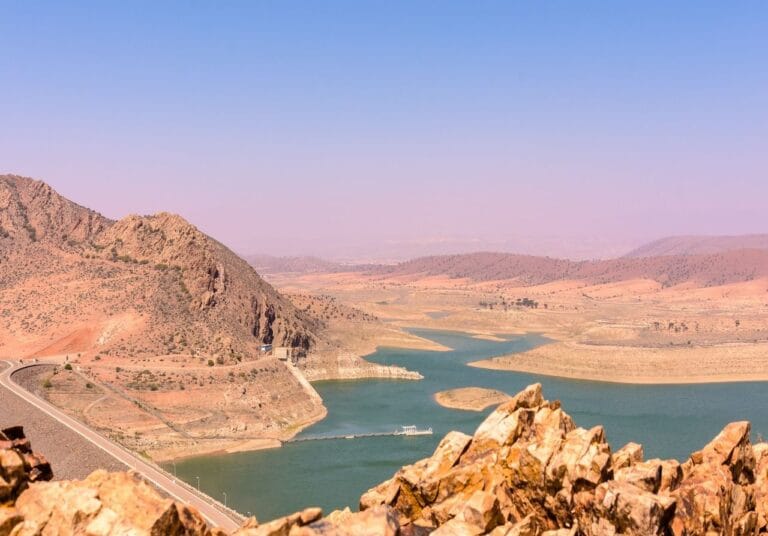As Morocco experiences a new heatwave, experts are sounding the alarm about a silent but destructive phenomenon: the massive evaporation of water stored in dams. Every day, 1.5 million cubic meters evaporate into the atmosphere, a volume equivalent to the annual consumption of several medium-sized cities in the country. In the midst of the summer season, this reality jeopardizes the efforts to replenish reserves made possible by recent rainfall.
An invisible but colossal loss
According to data from the Ministry of Equipment and Water, Moroccan dams lose up to 547 million cubic meters of water per year due to evaporation. In some extreme cases, this loss represents a quarter of the stored volumes. This situation is deemed “very concerning” by Charafat Afilal, former Minister Delegate in charge of Water, who emphasizes that the impact of heat is even stronger depending on the configuration of the basins and the nature of the soils.
This observation is shared by environmental expert Said Chakri, who reminds us that these losses occur even as several regions are already facing high water pressure. Evaporation is therefore no longer a mere collateral damage, but an aggravating factor of the structural water stress that the country is experiencing.
A technological response: floating solar panels
To counter this phenomenon, one solution is gaining traction: the installation of floating solar power plants on the water bodies of dams. This technology, adopted in several Asian and European countries, would not only reduce evaporation but also produce clean energy, while improving the energy efficiency of the panels due to the cooling effect of the water.
A pilot project is already underway in northern Morocco. In Tanger Med, a floating solar power plant of 13 megawatts is under construction on the Oued Rmel dam. It is expected to be operational in the second half of 2025 and will supply green electricity to the entire port complex.
An ambitious but costly project
The advantages of this technology are numerous: dual energy and water use, space optimization, reduction of water losses, and limitation of algae proliferation due to the shading created. However, its cost remains high: 20 to 30% more than a traditional land-based solar power plant. Technical challenges also need to be addressed, particularly regarding resilient floating structures, management of level variations, and maintenance.
A national urgency
In the context of climate change and repeated droughts, Morocco has no choice but to innovate to preserve its water resources. Solutions like floating solar panels cannot be considered in isolation. They must be part of a comprehensive water security strategy, integrating water conservation, wastewater reuse, optimization of agricultural irrigation, and adaptation of infrastructure to new climatic realities.
In summary, evaporation is no longer a fatality. It is now a technological, economic, and ecological challenge that Morocco must tackle in a concerted and ambitious manner.
With Le360


